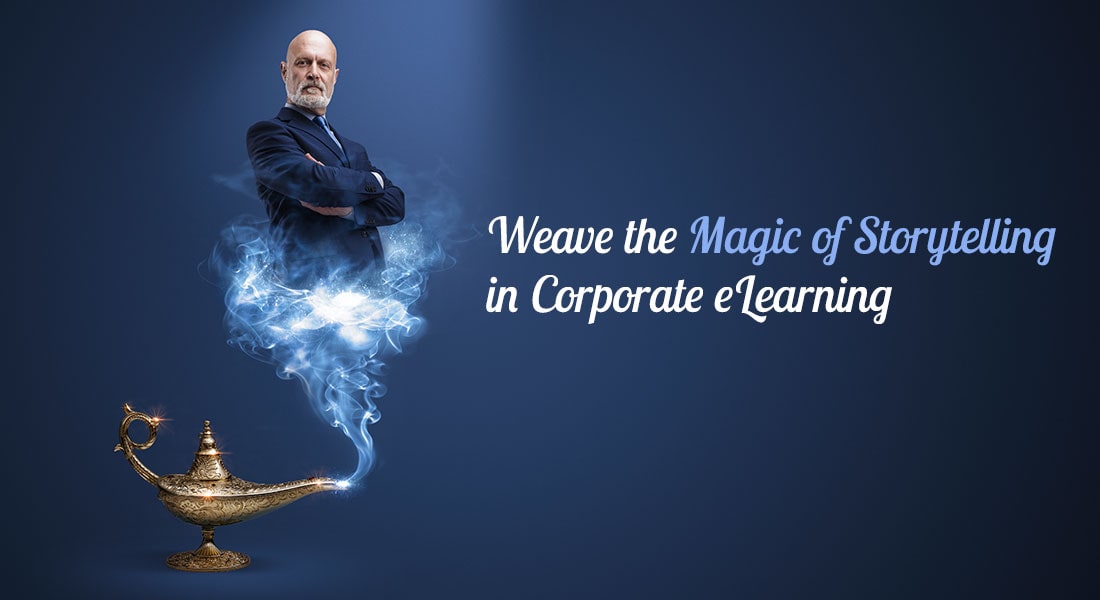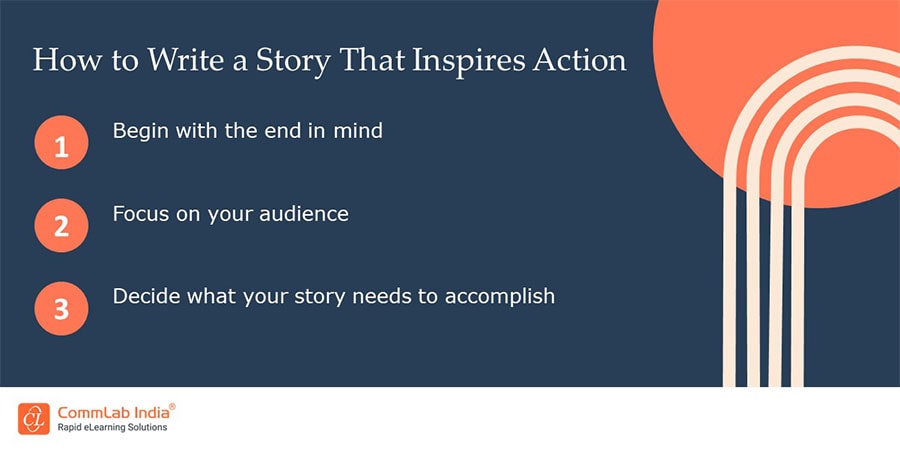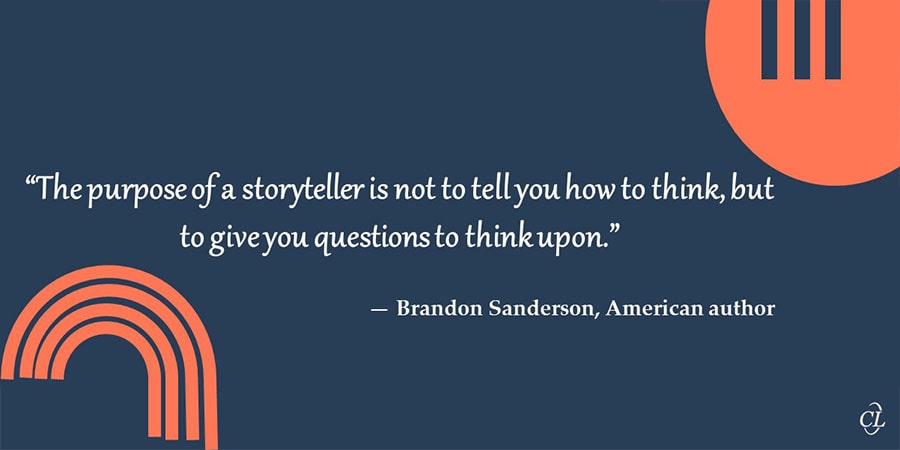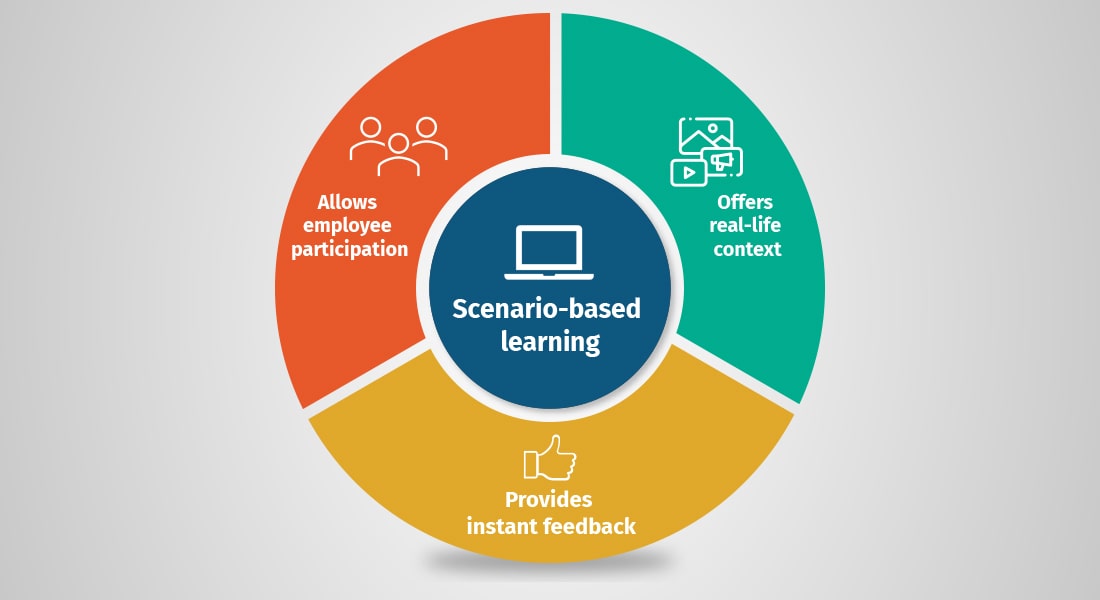Once Upon a Time…How to Weave the Magic of Storytelling in Corporate eLearning

“In order to win a man to a cause, you must reach his heart, the great high road to his reason.” — Abraham Lincoln. Powerful stories do just that. In the realm of corporate eLearning, where information overload and disengagement can sometimes reign supreme, a powerful tool exists to captivate learners and drive meaningful engagement — storytelling. Stories have a unique ability to resonate with individuals on an emotional level, making them a potent vehicle for delivering complex ideas and driving learning outcomes. In this blog, we'll explore the art of storytelling in corporate eLearning, uncovering its benefits and providing seven amazing tips to weave its magic effectively.
Let’s unfold the story…
Weave the Magic of Storytelling in Corporate eLearning!
A few tips to level up your game:
- Start with a strong hook
- Develop relatable characters
- Follow a clear story structure
- Make your content appealing and interactive
- Let learners unfold the mystery
Read on to explore more…
What is Storytelling?
Storytelling is an age-old tradition deeply ingrained in human culture. It's the art of conveying a message, lesson, or information through a narrative. Whether passed down orally through generations, found in ancient texts, or depicted in modern media, stories have always been a fundamental way for people to make sense of the world around them.
In the world of corporate eLearning, storytelling is a powerful instructional design strategy that establishes an emotional connection between the learners and the learning content. It is an interesting approach to breathe life into the serious information, data, and statistics, integral to your training content and make it easily consumable.
→ Download eBook: Storytelling and AI
Storytelling for Corporate Learners: What are the Key Benefits?
1. Better Engagement
Learner engagement is one of the major challenges in eLearning. Stories have a unique ability to capture attention and sustain interest. By presenting information in a narrative format, learners are more likely to stay engaged throughout the learning process.
2. Longer Retention
Research has shown that people remember stories much better than dry facts or bullet points. The narrative structure, characters, and plot elements help to encode information in a way that is easier to recall later.
3. Emotional Connection
Stories evoke emotions, which can deepen the learning experience. When learners emotionally connect with the content, they are more likely to internalize the message and apply it in real-world scenarios.

4. Increased Comprehension
Complex concepts can be simplified and made more accessible through storytelling. By presenting information in a relatable context, learners can better grasp abstract ideas and understand their practical implications.
5. Improved Empathy
Stories allow learners to see the world from different perspectives by immersing them in the experiences of others. This fosters empathy and encourages a deeper understanding of diverse viewpoints and experiences.
6. Advanced Problem-Solving
Narratives often revolve around characters facing challenges and overcoming obstacles. By witnessing these journeys, learners can gain insights into effective problem-solving strategies and apply them to their work situations.
7. Enhanced Creativity
Engaging with stories stimulates the imagination and encourages creative thinking. Learners are inspired to think outside the box, explore alternative solutions, and generate new ideas.
Watch this video to discover why storytelling should be incorporated in eLearning.
How to Weave the Magic of Storytelling in eLearning — 7 Amazing Tips
Annie Brewster mentions in her book “The Healing Power of Storytelling” that facts alone do not have the power to inspire action. Stories are the language of the heart, the currency of humanity, the drivers of change. Well, that’s the incredible power of storytelling. Scroll down for seven amazing tips to learn the art of weaving the magic of storytelling in eLearning.
1. Start with a Strong Hook
Building an emotional connection with your learners is the first step to drawing your learners to the eLearning course. Captivate learners from the very beginning by starting with a compelling hook or opening scene. This could be a thought-provoking question, a surprising fact, or an intriguing scenario that piques curiosity and draws learners into the story. Humor is a clever bait to start on a lighter note and doesn’t fail to play its charm.
2. Develop Relatable Characters
Create characters that learners can identify with and care about. Give them personalities, motivations, and challenges that mirror those encountered in the corporate world. This humanizes the learning experience and makes the content more engaging. Delve deep into understanding your target audience. Learn about the job positions and profiles, learning styles, and preferences of your learners, and the learning content to finalize characters that your learners will resonate with. The more they are involved in the content, the better the learning and the longer the retention.
3. Follow a Clear Story Structure
When it comes to impressive storytelling, cohesiveness is the key. You might have a brilliant story but if the narrative doesn’t flow well, your efforts might go in vain. Following the story arc is crucial. Organize your story with a clear beginning, middle, and end. Introduce the main characters and setting, establish the conflict or challenge they face, and then show how they resolve it. This clear structure provides a framework that helps learners follow the narrative and understand the key learning points.
4. Make Your Content Appealing and Interactive
Presentation matters. Especially, in this era of diminishing attention spans where the average human attention span is eight seconds, you need to present the content in a manner that intrigues learners. Enhance your storytelling with multimedia elements such as images, videos, and sound effects. Visuals can help set the scene, evoke emotions, and reinforce key concepts, while audio elements can add depth and immersion to the storytelling experience. Multisensory eLearning courses transport learners to the scenario described in the story and offer an immersive learning experience. However, remember to keep the elements subtle else they might overshadow the content and subsequently hamper learning.
5. Let Learners Unfold the Mystery

Don’t feed the story to your learners, let them unfold it themselves. Make your storytelling interactive by allowing learners to make choices or interact with the content in meaningful ways. This could involve branching scenarios, quizzes, or decision-making exercises that empower learners to actively participate in the story.
6. Include Real-World Examples
It is quite natural to sway into the world of fantasy while including the elements of storytelling in your eLearning courses. Forget not to keep it realistic and avoid too much drama. Ground your story in reality by incorporating real-world examples and case studies. Show how the concepts being taught are applied in practical situations and highlight the positive outcomes that result from effective decision-making and problem-solving.
7. End with a Thought-Provoking Conclusion
Wrap up your story with a thought-provoking conclusion that reinforces the key takeaways and encourages reflection. Prompt learners to consider how the lessons learned can be applied in their own lives and careers, fostering deeper learning and application of the content.
The Climax!
In the fast-paced world of corporate eLearning, storytelling offers a powerful way to engage learners, drive retention, and foster meaningful learning experiences. By harnessing the art of storytelling and applying these seven amazing tips, you can create eLearning programs that captivate, inspire, and empower your employees to reach their full potential. So, the next time you're tasked with designing an eLearning course, remember the magic of storytelling and let it cast its spell on your learners.
Time to engage, excite, and excel! Take your storytelling to the next level with AI in today’s technology-driven world. Download this eBook to combine the age-old art of storytelling with modern-day AI technology for interactive eLearning experiences.





